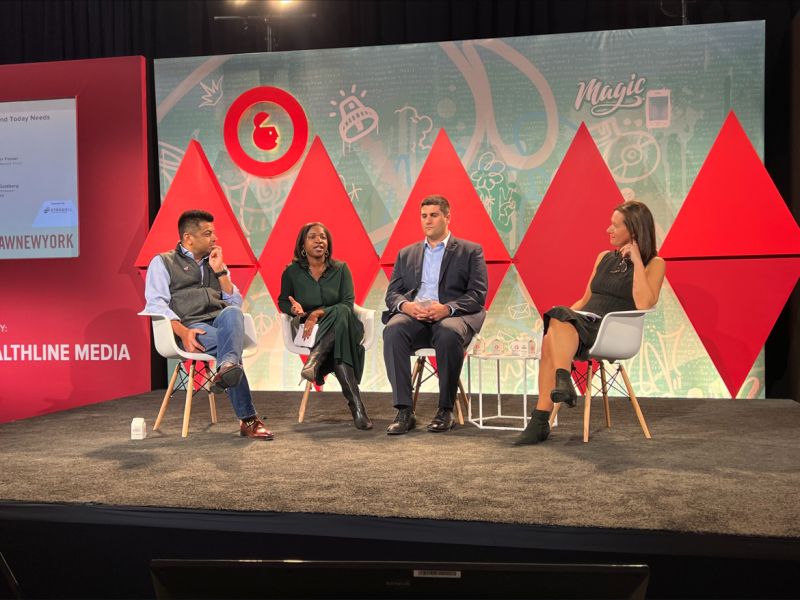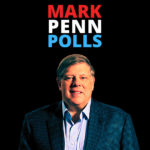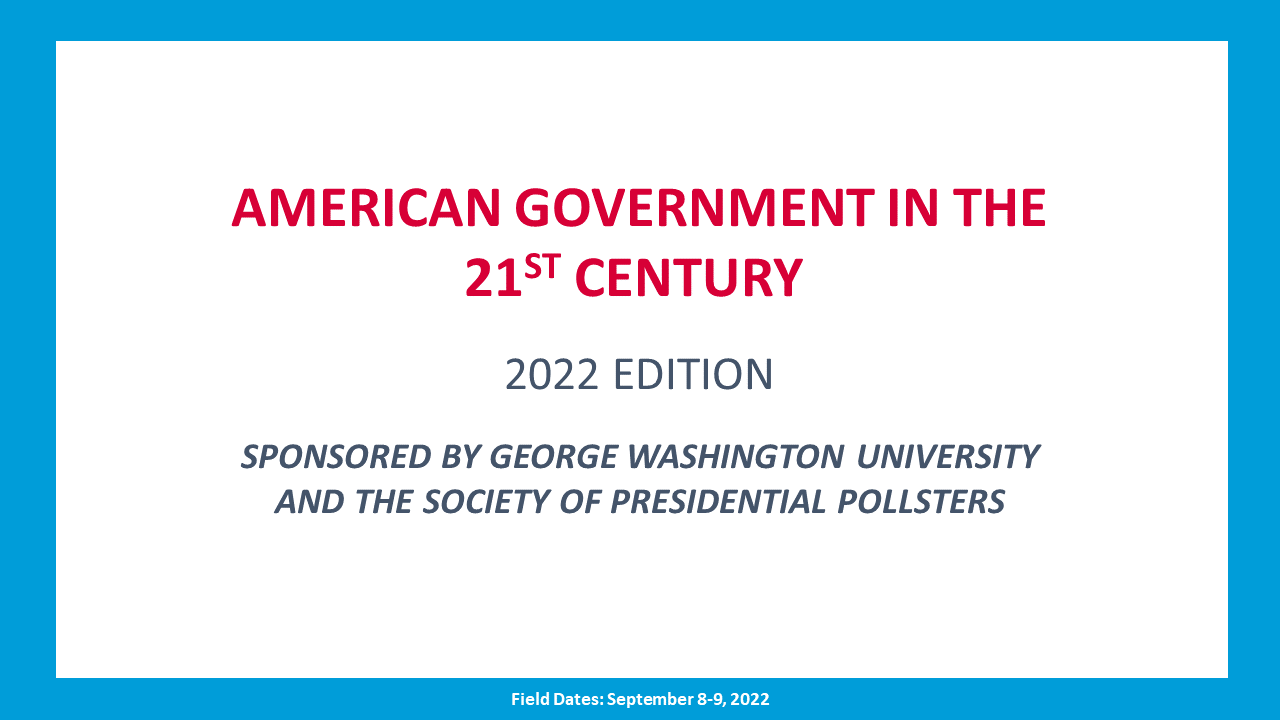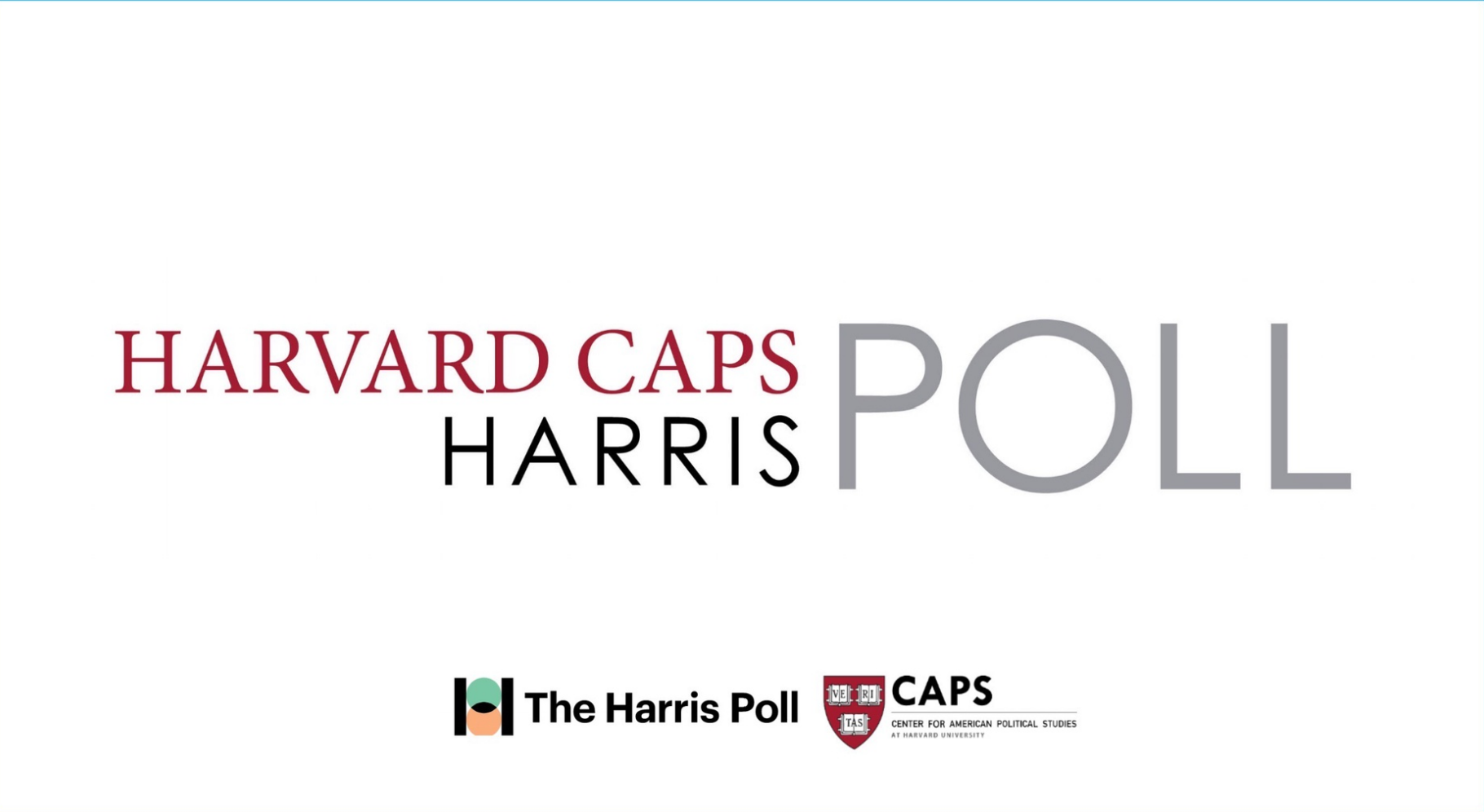By
By: Maggie Malek, CEO, MMI Agency
Originally Released on
The Marketing Insider
CONTACT
hello@stagwellglobal.com
SIGN UP FOR OUR INSIGHTS BLASTS
One of the great loves of my life (and one of my best kept secrets — until now) is gaming.
I have spent so much time online playing games, but it’s something I never talk about. Why? Maybe it’s because I’m a woman. Maybe it’s because I’m a CEO. Maybe I’m afraid I won’t be taken seriously.
But that time is past. It is now time for me to “step out of the shadows,” especially as an advocate for women in advertising, marketing and business in general, because now there is a particularly compelling reason to discuss it.

Thinking like a gamer is a superpower. Considering all the talk about gaming around us, the ability to understand that storytelling environment — or, how to “think like a gamer” — is an enormous asset. It’s estimated the global gaming market will amount to $268 billion annually in 2025. The opportunities for brands in this space are nearly limitless.
Using gaming to engage and convert. You can’t change hearts and minds with a big idea alone. Connecting and converting the modern consumer is all about meeting them where they are, in the thick of the customer journey, where multiple touchpoints build a lasting connection with your brand. It is that point where gaming can be… well, a game-changer.
As an audience segment for advertisers, gaming has been somewhat on the fringe. Brands and advertisers have generally not understood how to engage. As the space becomes more mainstream, though, opportunities for brands that are willing to explore are growing.
Successful campaigns start where brand followers are consuming content online.
That is where we should be telling stories. And we know gamers have active audiences that drive conversion. Gaming truly is the convergence of performance and possibility.
Gaming is only getting bigger. As marketers, though, we’ve really only scratched the surface; gaming is now everywhere. Women make up 45% of gamers in the U.S., which has been the case for a decade. The average age of gamers is 31, and 80% of all gamers are over the age of 18. According to Nielsen, 58% of the total U.S. population in 2013 were gamers. Today, it’s grown to 72%.
The opportunity for brands to create content for this massive (and growing) audience, then, is incredible, and it’s particularly exciting to see these possibilities opening up in the industry I love.
A lifelong gamer. From growing up battling my dad on our PC with Star Wars race games and Lemmings, to my first Game Boy, to my limited edition blue Sega Genesis, I have always been playing. Today, I’ve graduated to an array of games, from my Nintendo Switch to PokemonGO on my phone — and can we talk about how Edith Finch is the most beautiful game of all time!?
In fact, I run a Discord group for gamers, because we wanted to make sure there was a positive (no trolls allowed) corner of the internet for people to go. That group and its members were already a happy place for me, and then when I later got to meet the Discord team at a Stagwell SXSW event… major fan girl moment!
What’s next?
It’s practically a fait accompli that, moving forward, gaming is going to be a part of brands’ advertising media mix. Brands need to explore partnerships from in-game product placement to sponsoring gaming influencers, and partnering with all the social networks that focus on gaming.
No matter the story you are trying to tell, it’s now increasingly likely that a portion of your audience is spending time with gaming communities online. If you aren’t creating content there, you are missing out on rich engagement.
Gaming is the evolution of influencer marketing; it’s the evolution of CTV and display networks, of VR. And it’s the next stage of the industry we’re in. As the conversation on opportunities for branded content in games grows and evolves, brands will benefit from working with agencies that actually understand the space.
Related
Articles
In the News, Press Releases
Jul 09, 2025
STAGWELL LAUNCHES STAGWELL MEDIA PLATFORM (SMP), A CENTRALIZED TEAM OF GLOBAL MEDIA, TECHNOLOGY AND DATA INVESTMENT EXPERTS

Artificial Intelligence, In the News, Marketing Frontiers, Press Releases, Stagwell Marketing Cloud, Tech
Jun 12, 2025
PRophet, a Stagwell (STGW) Company, Completes Integration of UNICEPTA, Launches Unified Brand and Enhanced Media Intelligence Offering

In the News, Marketing Frontiers, Press Releases, Stagwell Marketing Cloud, Tech
Jun 11, 2025
The Marketing Cloud Launches Cutting-Edge Platform to Simplify Marketing Workflows

Newsletter
Sign Up
CONTACT
hello@stagwellglobal.com
SIGN UP FOR OUR INSIGHTS BLASTS

Missed Advertising Week New York this week? We distill the biggest brand takeaways on brand fandom, political advertising, and media channel transformations below. Follow Stagwell on LinkedIn to keep up with the insights.
Rise of Brand Fandom – Move over, sports teams and celebrities.
Fifty-seven percent of consumers consider themselves a fan of a brand or product – higher than sports (48%), movies (52%), celebrities (54%), or online influencers/personalities (37%).
The brands that take a holistic stake in consumers’ lives will drive loyalty, affinity, and advocacy–and not just in the moment. Fandom is not a fad or a flash in the pan; 2 in 5 brand fans have been fans for over 10 years. Focus on helping consumers develop their personalities through your brand by delivering marketing, events and experiences, and content that gives them a platform to express that personality.
“Fandom is critical in the luxury space. Luxury is no longer defined as the most expensive thing –it’s defined by insider knowledge. We’re seeing a dispersion of brands being considered ‘wealth’ and ‘luxury,’ and price point alone won’t keep you in that luxury equity space. It’s important to have fan bases that really think of your brand as luxury.” – Neda Whitney, SVP, Head of Marketing, Americas, Christie’s
Political is the Biggest Media Story of 2022 – Get ready for hotter cyclical media environments as political advertisers diversify digital media channels to engage more voters.
Brands will feel the effect of political messaging as political advertisers spend a record $3 billion in the last three weeks of the election alone.
Many ads will tell Americans they’re poorer than ever because of inflation, for example – how will brands push back and get consumers to continue spending? Brands can no longer afford to be apolitical but risk looking too performative if they don’t back up their positions with actions. Lyft decided to foreground its identity as a transportation company when deciding to act, and as a result, it has provided ride services for voting, vaccines, and reproductive rights.
“We saw in 2016 that so many people chose not to vote because they didn’t have access to transportation. So we asked ourselves: how can we make an impact there? We created a voter access program and saw its immediate impact in 2020. It’s about looking at the issues consumers care about and our services. It’s our job to listen – to talk to elected officials and let them know we can come in as a partner to solve some of the issues our consumers care about.” – Heather Foster, Head of Government Affairs, Lyft
Digital Channels and Political Advocacy – Are political advertisers about to have the digital marketing efficacy reckoning?
This cycle will be the first many realize media buys are not driving impact because of mistargeting. Many voters in battleground districts no longer have traditional television – but there’s a disconnect between ad spending and consumption, with most dollars still going to broadcast. Brands need to get more comfortable shifting the media mix and taking risks with bourgeoning digital channels.
“The idea that there’s the TV generation and then there’s the kids – it’s an antiquated view. The fact is cord cutting is mainstream – now the majority of the population – and the idea that we can say we have a TV strategy and a different digital strategy is fraught with disaster. As we iterate, brands need to think about messaging across the full funnel, and know that TV and streaming work really well together because it allows us to do that. The future will be integrated streaming and linear in a really incremental fashion.” – Ashwin Navin, CEO SambaTV
Resurgence of OOH – OOH is resurging because OOH is modern.
When you start treating it like programmatic or digital it becomes a valuable tool in the funnel. Driving consumer engagement and social amplification through use of the OOH medium. (The Harris Poll found TikTok and other social media platforms are a major source of OOH ad visibility: 82% of TikTok users report frequently noticing OOH ads in content in their feeds, with nearly identical impact reported by Facebook and Instagram users.) And don’t sleep on the innovation underway here: location-based insights, shared AR capabilities, and more are all letting advertisers do more at scale. Embrace the underlying technology capabilities of Out of Home as a resilient pillar of your media plan for 2023.
”Out of home isn’t changing – the strategy is. Media is the new experiential and Out of Home is where people are. The technology that sits behind Out of Home is driving a different strategy lens, a different creative lens, and a different content lens.” – Brad Simms, CEO, GALE Partners.
Related
Articles
In the News, Press Releases
Jul 09, 2025
STAGWELL LAUNCHES STAGWELL MEDIA PLATFORM (SMP), A CENTRALIZED TEAM OF GLOBAL MEDIA, TECHNOLOGY AND DATA INVESTMENT EXPERTS

Artificial Intelligence, In the News, Marketing Frontiers, Press Releases, Stagwell Marketing Cloud, Tech
Jun 12, 2025
PRophet, a Stagwell (STGW) Company, Completes Integration of UNICEPTA, Launches Unified Brand and Enhanced Media Intelligence Offering

In the News, Marketing Frontiers, Press Releases, Stagwell Marketing Cloud, Tech
Jun 11, 2025
The Marketing Cloud Launches Cutting-Edge Platform to Simplify Marketing Workflows

Newsletter
Sign Up
By:
This Hispanic Heritage Month, Stagwell is collaborating with creatives across its global network to curate artwork that reflects their cultural heritage. Our series continues with a contribution from Stagwell Jr. Designer Nolan Mendoza called “The Diablitos.”
“Growing up in a mixed Mexican American household, tradition and art shaped my early interests for design. There is something unique and proud about Mexican style, which fuses bright colors and humanist shapes. Everything is designed by hand. And the art is often heavily influenced by Catholicism. I’ve carried all of those techniques and styles into my own personal work today. The Diablitos is an ongoing personal project born of processing Catholic guilt and being queer while trying to balance and maintain my relationship with a higher power. Each piece is hand-carved from linoleum and printed with ink, displaying its own unique and original marks and qualities.”
Nolan joined Stagwell in 2021 to help transform its visual identity. Prior to Stagwell, Nolan worked as a designer at Gibson & Dehn and as a model represented by Wilhelmina, where he walked New York Fashion Week.
Connect with Nolan on LinkedIn
Next: Enter Peruvian Wakanda with Observatory’s Christian Silva
Related
Articles
In the News, Investments & Financials, Press Releases, Talent & Awards
Jul 08, 2025
Stagwell (STGW) Advances Executive Team with Four Key Appointments

In the News, Press Releases, Thought Leadership
Jun 10, 2025
Stagwell (STGW) Chairman and CEO Mark Penn to Discuss the Irreplaceable Power of Human Creativity on the Main Stage of Cannes Lions

Events, In the News, Press Releases, Talent & Awards
Jun 05, 2025
Code and Theory Named ANA B2B Agency of the Year After Transforming the World’s Leading Brands

Newsletter
Sign Up
By
Mark Penn
Chairman and CEO, Stagwell
CONTACT
hello@stagwellglobal.com
SIGN UP FOR OUR INSIGHTS BLASTS

When I ran campaigns, I used to lament that corporations would spend more on marketing a hamburger than marketing political ideas and efforts. Back then, campaigns were struggling shoestring enterprises. No longer.
Today, campaigns and issue groups spend billions of dollars (much of it ineffectively) on communicating to voters, and fundraising at large has become big business. Ironically, the rocket fuel for all this was not the much-maligned Supreme Court decision Citizens United that gave corporations political speech rights. Rather, it was the internet – opening up a far speedier and cost-effective method of motivating voters and fundraising from them. Everything we condemn about politics and social media today – the speed of clickbait, the sensationalizing of small news events, the partisan divide – has paved the way for online fundraising and its explosive growth.
Political advertising spend is rapidly breaking records
Political advertising will hit $7.8bn in the 2022 midterm elections – nearly approaching the $8.5bn spent across TV, radio and digital media in the 2020 presidential cycle. We are seeing continued growth in campaign spending, and each mid-term is coming close to the previous presidential runs in spend. Each president leaps to a new record in political expenditures. It will take a set of really mundane candidates with a runaway winner to break this ever-increasing cycle. Absent that, this is a double-digit growth spiral for several more election cycles. I never thought I would see $10m Congressional races and $100m Senate contests, and yet those are now everyday occurrences.
Digital fundraising is rising at a faster rate than overall spending
Of the $14.4bn in paid media spent during the 2020 cycle, 49% was raised online. The 2022 cycle should exceed $14bn in paid media spend, with over 60% likely to come from online fundraising. To put that in context – in 2014, less than 9% of the $4.4bn in contributions came in via online donors. Democrats, who are notably vocal about money in politics, spend the most – generally about 50% more than the Republicans.
Donors today are largely first-timers – and start small
For most donors over the last few cycles, giving to politics has been a new experience. Most of these contributions aren’t from big-dollar donors or PACs, but low-dollar donations from average Americans giving amounts between $30 and $100 (76.1% of Act Blue Democratic donors in 2020 were first-time donors).
Americans have a love-hate relationship with political giving. When asked to give $1 on their tax return to fund campaigns, most Americans said ‘no’ to the voluntary check-off, and the fund was running out of money. Taxpayers generally believed politicians should finance their own campaigns and leave the public out of them. In the ‘70s and ‘80s, candidates used direct mail to gather low-dollar gifts, but it was slow and expensive. In 2008, social media entered the scene and spilled over into news and politics. With its proliferation of inflammatory messages and clickbait, social media was the ideal incubator for online giving. While less than 1% of voters donated to campaigns in the past, that number is now up to 10% and continues to grow.
How companies can mimic political fundraising techniques
I always call online fundraisers the best marketers in the world. Why? Because in return for their funds, consumers get absolutely nothing of tangible value – no product and not even a tax deduction.
What makes them such good marketers? They believe in math. They have hundreds of people who craft messages, then test them methodically and go big with the ones that work. They refine their lists, carefully managing their communications to people to avoid overload or confusing and contradictory messages. And they utilize low-cost, effective messaging techniques, driving campaigns through email and increasingly via text messaging, as consumers switch their preferred communication modes.
Today, these fundraisers employ the process and rigor that most corporations should envy: ample message creation, thorough testing, careful media mix modeling and rigorous adherence to performance standards and return on investment. Politics once again leads the way in how to structure and carry out effective online marketing. This rigorous approach would and is working for commercial online marketing, though retail marketers have more limits on how aggressive they can be. Still, they can treat Thanksgiving, Prime Days and Christmas as a kind of commercial election day, working up to harvesting sales in the same way that political fundraising is mostly prospecting until the campaign’s final months. Commercial marketers can also be more aggressive via text messaging to mimic these successful political messages.
Political fundraising is only starting to hit its groove and has many potential roads for broad expansion. While online fundraising exploded in 2020, only 20% of the 180 million Americans who voted in that cycle donated to a campaign, and under 2% of the country gave over $200. By comparison, over 70% of Americans gave to charity in 2020, totaling $324.1bn in individual contributions that mirror the scale and spend of small-dollar political contributions. The addressable digital advocacy and political fundraising markets represent massive growth opportunities.
Galvanizing the masses around a cause: still the mandate
Online political fundraising is, in essence, fan marketing. It’s about getting those who care most about your brand to be even more passionate and committed. When an employee of a competitor company insults a customer, don’t just sit there – use it to your advantage and broadcast it to your loyal fans. Most commercial marketing, even online, is passionless and saccharine; if you want to be as successful as political marketers, you will have to take some risks and be bolder. Now, this may not fit all corporate brands, but that’s the advantage that upstart challenger brands have in the marketplace – they can be free to be out there, within the bounds of good humor and taste.
To be clear, political ads continue to be a discipline unto themselves, built primarily around negative messages with no clear analog in commercial marketing. Online fundraising also includes tough negative messages, but is built mainly around bringing people together as part of a group that wants to help a cause. This new technique is at the forefront of what’s possible in this new online world as more and more people are plugged into news and current events. Online fundraising can and will expand into the not-for-profit world, but it will surely lead the way in fan marketing for breakthrough companies as well.
Mark Penn is chairman and chief executive officer of New York-based marketing group Stagwell.
Related
Articles
In the News, Press Releases
Jul 09, 2025
STAGWELL LAUNCHES STAGWELL MEDIA PLATFORM (SMP), A CENTRALIZED TEAM OF GLOBAL MEDIA, TECHNOLOGY AND DATA INVESTMENT EXPERTS

Artificial Intelligence, In the News, Marketing Frontiers, Press Releases, Stagwell Marketing Cloud, Tech
Jun 12, 2025
PRophet, a Stagwell (STGW) Company, Completes Integration of UNICEPTA, Launches Unified Brand and Enhanced Media Intelligence Offering

In the News, Marketing Frontiers, Press Releases, Stagwell Marketing Cloud, Tech
Jun 11, 2025
The Marketing Cloud Launches Cutting-Edge Platform to Simplify Marketing Workflows

Newsletter
Sign Up
International Podcast Day is upon us – and after the gold rush of podcast deals, advertising partnerships, and content launches in 2022, there’s a sea of choices to sift through as you’re setting your morning playlist. We’re sharing some of our favorite podcast series from across the Stagwell network
The Harvard-Harris Poll Debrief with Mark Penn

Harris Poll chairman Mark Penn and The Hill’s Julia Manchester discuss results from the latest Harvard CAPS-Harris Poll on voters’ political beliefs. Each month Mark picks one word to best describe the state of public opinion.
Is This Thing On? – GALE
“Is This Thing On?” is a podcast from GALE, exploring marketing, life, and random thoughts with business and creative leaders from around the globe. Past guests include Chipotle CMO Chris Brandt, iHeartMedia CMO Gayle Troberman, Discovery Global CMO Patrizio Spagnoletto, and more!

Brand on Purpose with KWT Global’s Aaron Kwittken
Purpose and profit can coexist. In fact, purpose-driven businesses often find greater success when they authentically connect their brand and mission with a cause that aligns with consumer vision. Brand on Purpose is an engaging and popular podcast focused on uncovering the untold stories of entrepreneurs and senior leaders who have discovered how to serve a greater good while building or transforming major brands.

America This Week – The Harris Poll
Each week, we surface the most important societal shifts, consumer sentiments, and marketplace trends leaders need to know to stay in lockstep with consumers’ shifting desires. Grounded in weekly polling data, ATW is hosted by NYT bestselling author John Gerzma, CEO of The Harris Poll and futurist Libby Rodney, CSO of The Harris Poll.

THE STREAM – Allison+Partners
In a world awash with hot takes and ALL CAPS TWEETS, it’s easy to get so lost in the debate that you forget what the story was in the first place. Never fear, hosts Owen Clark and Micah Baro are your guides through today’s turbulent communications landscape, combining candid interviews with experts with their own unique perspectives gleaned from a decade working across journalism, public relations, video production and corporate sales. The Stream podcast is presented by Allison+Partners – which means no ads!

STUFFED in Your Ears – Goodstuff
Listen to topical conversations from Goodstuffers and never-before shared insights from special industry guests.
Related
Articles
In the News, Investments & Financials, Press Releases, Talent & Awards
Jul 08, 2025
Stagwell (STGW) Advances Executive Team with Four Key Appointments

In the News, Press Releases, Thought Leadership
Jun 10, 2025
Stagwell (STGW) Chairman and CEO Mark Penn to Discuss the Irreplaceable Power of Human Creativity on the Main Stage of Cannes Lions

Events, In the News, Press Releases, Talent & Awards
Jun 05, 2025
Code and Theory Named ANA B2B Agency of the Year After Transforming the World’s Leading Brands

Newsletter
Sign Up
The global network is bringing together financial experts and political strategists from both sides of the aisle to help brands nail their messaging on oft-controversial topics.

Stagwell, the agency network founded by political strategist and former Microsoft executive Mark Penn, is launching a new business arm designed to help brand leaders navigate the nuances of political and social issues. The new branch, dubbed the Risk and Reputation Unit, brings together experts from across the aisle to advise executives and help them form strategic bipartisan communications.
With global tensions rising in light of the conflict in Ukraine, Stagwell felt the timing was right. “One of the things we realized, particularly in the aftermath of some of the very public misses at the start of the Russia-Ukraine war, was that CEOs and CCOs need professional, outside advice on navigating emerging political issues,” Penn tells The Drum. “CEOs have minutes to react once internal stakeholders begin organizing around a problem – and they make decisions based primarily on internal information with little outside perspective. Or, those who do look externally seek political expertise from only one side of the aisle, ensuring that their communications will alienate existing or potential consumers.”
And getting the brand messaging right, he says, is no small matter, as one ill-advised mistake could result in billions of dollars in lost shareholder value and long-term damage to the brand’s reputation. “This isn’t just an issue of outplaying the news cycle.”
The new practice will see Stagwell’s corporate advisors come together with financial and political strategists from the network’s Democratic communications and consulting firm SKDK (which worked on Biden-Harris 2020 campaign), experts from Stagwell’s Republican digital-focused political comms agency Targeted Victory (which is on track to raise more than $1.5bn for Republican causes and campaigns this election cycle) and financial communications professionals from Sloane & Company. The group includes ex-Ford, IBM and Microsoft execs, as well as campaign strategists who have worked in 12 different US presidential races and 270 Senate and House races.
But Penn stresses that the branch is “not another purpose marketing unit” – it goes far beyond that. “We’ve built the Business Risk and Reputation Unit to provide two critical missing pieces of the consideration puzzle. One is bipartisan political insights, and [the second] is multidisciplinary, multi-sector business leadership and financial comms expertise,” he says. “In conjunction with a leader’s internal insights, it’s the perfect recipe for traversing today’s minefield of policy, political and social issues, while balancing risk.”
Combining a diverse and balanced range of voices, Stagwell hopes, will help brand leaders take stock of the issues that matter most to stakeholders and subsequently develop and deploy both proactive and reactive strategies to manage brand purpose and reputation, while safeguarding their bottom lines. “Our teams are on-hand with always-on global brand intelligence and polling, ready to spring into action at the first sign of an emerging issue,” says Penn.
For brands – which are under increasing pressure to take public stances on hot-button issues – it can feel nearly impossible to toe the line. While data from Kantar indicates that some 68% of consumers believe it’s important for brands to take a position on social and political issues, Stagwell’s own polls, conducted in partnership with Axios, have found that 59% of consumers say there is more risk than reward in speaking out on social issues. And 37% of the public say that chief executives should stay out of social debates.
Even considering the risks, Penn says there are some simple, straightforward tips for getting it right. It’s the same advice he gave to candidates when he worked in politics (Penn co-founded PSB, a major polling firm and consultancy, and served as a chief strategist on Hillary Clinton’s 2008 presidential campaign). “Study the issues, understand your stakeholders and ensure that when you speak out, it’s consistent with the platform you’ve built around your brand. The closer a policy or social issue is to your company’s core value proposition, the more the topic makes sense.”
Related
Articles
In the News, Press Releases
Jul 09, 2025
STAGWELL LAUNCHES STAGWELL MEDIA PLATFORM (SMP), A CENTRALIZED TEAM OF GLOBAL MEDIA, TECHNOLOGY AND DATA INVESTMENT EXPERTS

Artificial Intelligence, In the News, Marketing Frontiers, Press Releases, Stagwell Marketing Cloud, Tech
Jun 12, 2025
PRophet, a Stagwell (STGW) Company, Completes Integration of UNICEPTA, Launches Unified Brand and Enhanced Media Intelligence Offering

In the News, Marketing Frontiers, Press Releases, Stagwell Marketing Cloud, Tech
Jun 11, 2025
The Marketing Cloud Launches Cutting-Edge Platform to Simplify Marketing Workflows

Newsletter
Sign Up
CONTACT:

Voter confidence in United States government institutions remains largely unchanged, according to a new survey by the Society of Presidential Pollsters at the George Washington University. However, significant majorities feel the U.S. economy and the nation as a whole are going in the wrong direction. While nearly three-quarters of Americans believe in the importance of bipartisan policy-making, a majority also believe public institutions are becoming increasingly politicized.
Views on the performance of key government institutions shifted modestly compared to last year’s survey. Voters are evenly split on whether the presidency is working and three-fifths feel Congress is not working, figures that barely budged compared to the 2021 poll. 57% of voters said the Supreme Court is working, a 2-point decline from last year and an 8-point decline since 2020. Although a majority of voters believe the Department of Justice and the FBI are performing well, the Bureau suffered a 6-point drop in confidence, while the DOJ’s performance numbers fell 4%. A slim majority of voters claim federal law enforcement agencies have become politically weaponized. Around two-thirds of voters feel democracy is under assault.
“Across a broad range of questions in this survey — from Constitutional values to the latest hot-button squabble — the responses of American voters display a profound concern with the state of our politics and the functioning of our governmental institutions,” Christopher Arterton, professor emeritus of political management and founding dean of the GW Graduate School of Political Management, said.
A strong but declining share of American voters consider bipartisanship to be a crucial component of our democracy. 71% of voters believe it is critically important for both parties to agree on major policy changes, a 7-point slide from last year’s poll, and approximately three-quarters of voters believe the bipartisan system of governing is no longer working. While nearly 9 in 10 voters over the age of 65 view bipartisanship as indispensable, just under 6 in 10 of those between the ages of 18 and 34 feel the same way.
“Almost two thirds believe that both the Congress and the Presidency are becoming more politicized and a majority think the same of many executive branch agencies,” Arterton said. “Two-thirds say that party leaders serve their party’s interest over the national interest, and almost three-quarters believe that politicians in Washington are not willing to compromise.”
The survey also questioned voters about issues that will likely influence November’s midterm elections. 34% of voters, including 60% of Republicans, still falsely claim the 2020 election was stolen from former President Donald Trump. 65% of voters, including 49% of Democrats, think there were at least some minor vote counting problems in the 2020 election. 51% of surveyed voters called President Biden’s decision to cancel student loan debt an improper use of executive power. Half of voters say executive orders in general are being increasingly abused and 56% say our system needs more checks and balances. 52% of voters feel the Supreme Court was right to make abortion and same-sex marriage constitutional rights, a considerable decline from the 2020 survey, largely due to a precipitous drop in Republican support.
HarrisX, on behalf of the Society of Presidential Pollsters, conducted the online survey from September 8 – 9, 2022. 1,851 registered voters participated in the survey. Results were weighted for age within gender, region, race or ethnicity, income, education, political party, and political ideology where necessary to align them with their actual proportions in the population. The margin for error was +/- 2.3%.
The complete results from the survey can be found here. Professor Arterton and Society of Presidential Pollsters founder Mark Penn will discuss the survey results on Wednesday, September 14, at 12:30 PM. If you would like to attend the event at the George Washington University Milken Institute School of Public Health, please RSVP to Danny Parra at dparra@gwu.edu. The event will also be live streamed on the GSPM Facebook page.
The George Washington University established the Society of Presidential Pollsters in 2010. The Society acts as a membership organization for the select group of people who have served as public opinion advisors to the President of the United States. The Society aims to collect and preserve records of the polling conducted on behalf of the White House over the last eight decades.
Related
Articles
In the News, Investments & Financials, Press Releases, Talent & Awards
Jul 08, 2025
Stagwell (STGW) Advances Executive Team with Four Key Appointments

In the News, Press Releases, Thought Leadership
Jun 10, 2025
Stagwell (STGW) Chairman and CEO Mark Penn to Discuss the Irreplaceable Power of Human Creativity on the Main Stage of Cannes Lions

Events, In the News, Press Releases, Talent & Awards
Jun 05, 2025
Code and Theory Named ANA B2B Agency of the Year After Transforming the World’s Leading Brands

Newsletter
Sign Up
CONTACT
hello@stagwellglobal.com
SIGN UP FOR OUR INSIGHTS BLASTS
In partnership with Ragan Communications, PRophet Founder & CEO Aaron Kwittken speaks with a panel of experts to discuss the new technologies that promise to help PR practitioners demonstrate performance using real-time data instead of relying on gut instinct, relationships or a “great story idea”. Panel includes Aaron Bernstein (Head of Market and Competitor Intelligence: Enterprise Strategy – Walmart), Ben Choder (former President of Notified and author), and Nick Loui (Co-Founder & CEO of PeakMetrics).
Public relations has historically been a relationship-based business. The relationship between a PR practitioner and a journalist or media outlet was special and sacrosanct. This relationship, along with a great story idea, is what used to drive earned media performance. Yet, as newsrooms contract, more and more journalists are becoming freelancers and free agents. And stories are less driven by great narrative or through media relationships and more often driven by search with reporters being compensated on clicks, likes, and shares alongside affiliate marketing partnerships. How can AI, machine learning, and natural language processing help the PR and media relations industry modernize the pitch process?
Newsletter
Sign Up
Related
Articles
In the News, Press Releases
Jul 09, 2025
STAGWELL LAUNCHES STAGWELL MEDIA PLATFORM (SMP), A CENTRALIZED TEAM OF GLOBAL MEDIA, TECHNOLOGY AND DATA INVESTMENT EXPERTS

Artificial Intelligence, In the News, Marketing Frontiers, Press Releases, Stagwell Marketing Cloud, Tech
Jun 12, 2025
PRophet, a Stagwell (STGW) Company, Completes Integration of UNICEPTA, Launches Unified Brand and Enhanced Media Intelligence Offering

In the News, Marketing Frontiers, Press Releases, Stagwell Marketing Cloud, Tech
Jun 11, 2025
The Marketing Cloud Launches Cutting-Edge Platform to Simplify Marketing Workflows

Newsletter
Sign Up
OVERTURN OF ROE VS. WADE INCREASES LIKELYHOOD TO VOTE DEMOCRATIC, BUT STUDENT DEBT RELIEF HAS LITTLE NET EFFECT ON DEMOCRATS’ OUTLOOK
MOST AMERICANS WANT A NEUTRAL SPECIAL MASTER AFTER DOJ’S TRUMP RAID AND THEY OPPOSE BIDEN CALLING MAGA REPUBLICANS AN EXISTENTIAL THREAT TO THE COUNTRY

NEW YORK and CAMBRIDGE, Mass. – Stagwell (NASDAQ: STGW) today released the results of the September Harvard-CAPS Harris Poll, a monthly collaboration between the Center for American Political Studies at Harvard (CAPS) and the Harris Poll.
President Joe Biden’s approval rating remains underwater at 41% and inflation is still the biggest concern for voters, over half of whom say the Inflation Reduction Act is more likely to increase rather than decrease inflation. But the midterms are competitive, with the Congressional ballot split at 51% Democrat, 49% Republican.
Results also show the FBI’s raid of Donald Trump’s residence has not hurt the standing of the former president, whom voters would still pick in a presidential election over Joe Biden if the 2024 election were held today,. Americans are evenly split on whether the raid was politically motivated, but a clear majority, 58%, think appointing a special master to review the documents taken by the Department of Justice is reasonable.
Other topics surveyed in this month’s poll include voter views on Biden’s Philadelphia speech and his criticism of MAGA Republicans, which is seen as divisive; the president’s student debt cancellation which has received a lukewarm reception ahead of the midterms; and voters’ call for a special prosecutor to investigate the Hunter Biden laptop story. Download key results here.
“The dynamics for a Republican surge are here but the Democrats have held the dam as the midterms remain a dead heat,” said Mark Penn, Co-Director of the Harvard-CAPS Harris Poll and Stagwell Chairman and CEO. “The Democrats’ most recent moves may have killed their momentum, though, as most Americans disapproved of Biden’s speech calling MAGA Republicans a threat to the country. His executive order canceling student debt has not attracted new voters, either. Americans want less politicization, not more.”
DEMOCRATS HOLD THE DAM AS INFLATION REMAINS TOP CONCERN
- Biden’s approval has ticked up slightly to 41% as voter sentiment on his administration’s handling of inflation and unemployment improve.
- The generic Congressional ballot remains tight, 51-49 in favor of the Democrats.
- Inflation remains the biggest concern for both Democrats and Republicans, followed by abortion rights for Democrats and immigration for Republicans.
- The Inflation Reduction Act faces skepticism: 53% of voters believe it will increase inflation.
DOJ RAID SPLITS THE COUNTRY WITHOUT HURTING TRUMP
- After the DOJ raided Mar-a-Lago, Trump is still the 2024 favorite: 6 in 10 GOP voters would pick Trump if the Republican presidential primary were held today. Trump would win the presidential election against Biden or Kamala Harris if it were held today.
- The raid is dividing Americans: Voters are evenly split on whether the Mar-a-Lago search was required by DOJ protocols or a politically motivated use of force, and whether the DOJ took more documents than the warrant allowed.
- Americans want the DOJ to use other methods: 60% think that if the DOJ wanted Trump’s documents, it should have asked a judge to order it through open court rather than use a search warrant to seize them. 58% think the appointment of a special master to assess what the DOJ took is reasonable.
BIDEN’s SPEECH ON MAGA REPUBLICANS IS UNPOPULAR AS AMERICANS WORRY ABOUT DIVIDING THE COUNTRY
- Biden’s September 1 speech in Philadelphia, in which he called Trump and MAGA Republicans a threat to the country, is viewed as divisive: 56% of voters, including 62% of Independents, opposed it.
- But Biden’s new rhetoric may motivate the base: 73% of Democrats think it is not a gross exaggeration to say that there are tens of millions of dangerous MAGA Republicans.
- Most Americans want Biden to be a unifying figure: 60% say a speech such as his September Philadelphia address divides and holds back the country, and 55% think Biden should be unifying the country instead.
- More Americans are concerned about the socialist left rather than MAGA Republicans gaining power, 55-45.
AMERICANS WANT TO INVESTIGATE THE HUNTER BIDEN LAPTOP STORY
- The Hunter Biden laptop story is not going away: 59% of Americans think the laptop story is genuine, not Russian disinformation. 63% of voters think the FBI helped suppress the story by telling tech companies it could be Russian disinformation.
- Americans are suspicious of the investigation process: 55% think the DOJ and FBI are slow-walking the Hunter Biden investigation to protect President Biden.
- 63% of voters think the DOJ should appoint a special prosecutor to investigate the Biden laptop.
BIDEN’S STUDENT LOAN RELIEF DOES NOT AFFECT MANY AMERICANS OR MAKE THEM WANT TO VOTE DEMOCRATIC
Americans are evenly split on Biden’s cancellation of up to $20,000 of debt for couples making up to $250,000.
- Only 17% of Americans say they will be personally helped by the program.
- Voters are skeptical of Biden’s method: 56% think it was wrong of Biden to act without Congress, and 52% think his executive order will ultimately be deemed unconstitutional.
- Debt relief is having little net effect on voters’ likelihood to vote Democratic: 35% say it will make them more likely to vote blue, but 37% say it will make them less likely.
The September Harvard-CAPS Harris Poll survey was conducted online within the United States from September 7-8, 2022, among 1,854 registered voters by The Harris Poll and HarrisX. Follow the Harvard CAPS Harris Poll podcast at https://www.markpennpolls.com/ or on iHeart Radio, Apple Podcasts, Spotify, and other podcast platforms.
About The Harris Poll
The Harris Poll is a global consulting and market research firm that strives to reveal the authentic values of modern society to inspire leaders to create a better tomorrow. It works with clients in three primary areas: building twenty-first-century corporate reputation, crafting brand strategy and performance tracking, and earning organic media through public relations research. One of the longest-running surveys in the U.S., The Harris Poll has tracked public opinion, motivations, and social sentiment since 1963, and is now part of Stagwell, the challenger holding company built to transform marketing.
About the Harvard Center for American Political Studies
The Center for American Political Studies (CAPS) is committed to and fosters the interdisciplinary study of U.S. politics. Governed by a group of political scientists, sociologists, historians, and economists within the Faculty of Arts and Sciences at Harvard University, CAPS drives discussion, research, public outreach, and pedagogy about all aspects of U.S. politics. CAPS encourages cutting-edge research using a variety of methodologies, including historical analysis, social surveys, and formal mathematical modeling, and it often cooperates with other Harvard centers to support research training and encourage cross-national research about the United States in comparative and global contexts. More information at https://caps.gov.harvard.edu/.
Related
Articles
In the News, Investments & Financials, Press Releases, Talent & Awards
Jul 08, 2025
Stagwell (STGW) Advances Executive Team with Four Key Appointments

In the News, Press Releases, Thought Leadership
Jun 10, 2025
Stagwell (STGW) Chairman and CEO Mark Penn to Discuss the Irreplaceable Power of Human Creativity on the Main Stage of Cannes Lions

Events, In the News, Press Releases, Talent & Awards
Jun 05, 2025
Code and Theory Named ANA B2B Agency of the Year After Transforming the World’s Leading Brands

Newsletter
Sign Up
CONTACT
hello@stagwellglobal.com
SIGN UP FOR OUR INSIGHTS BLASTS

Mark Penn is the CEO of Stagwell and a longtime pollster and strategic advisor. He’s a former senior executive at Microsoft and has advised politicians including Bill Clinton and Tony Blair.
Mark and Auren discuss Mark’s books Microtrends and Microtrends Squared, in which Mark identified minor demographic trends and predicted their outsized impact on society and the economy. Mark gets into the mechanics of good opinion polling and breaks down the major differences between political and consumer polling, and how internet polling is affecting the industry. They also discuss Stagwell and Mark’s digital-first strategy for disrupting the old-school advertising holding companies.
World of DaaS is brought to you by SafeGraph. For more episodes, visit safegraph.com/podcasts.
You can find Auren Hoffman on Twitter at @auren and Mark at @Mark_Penn.
Related
Articles
In the News, Press Releases
Jul 09, 2025
STAGWELL LAUNCHES STAGWELL MEDIA PLATFORM (SMP), A CENTRALIZED TEAM OF GLOBAL MEDIA, TECHNOLOGY AND DATA INVESTMENT EXPERTS

Artificial Intelligence, In the News, Marketing Frontiers, Press Releases, Stagwell Marketing Cloud, Tech
Jun 12, 2025
PRophet, a Stagwell (STGW) Company, Completes Integration of UNICEPTA, Launches Unified Brand and Enhanced Media Intelligence Offering

In the News, Marketing Frontiers, Press Releases, Stagwell Marketing Cloud, Tech
Jun 11, 2025
The Marketing Cloud Launches Cutting-Edge Platform to Simplify Marketing Workflows







